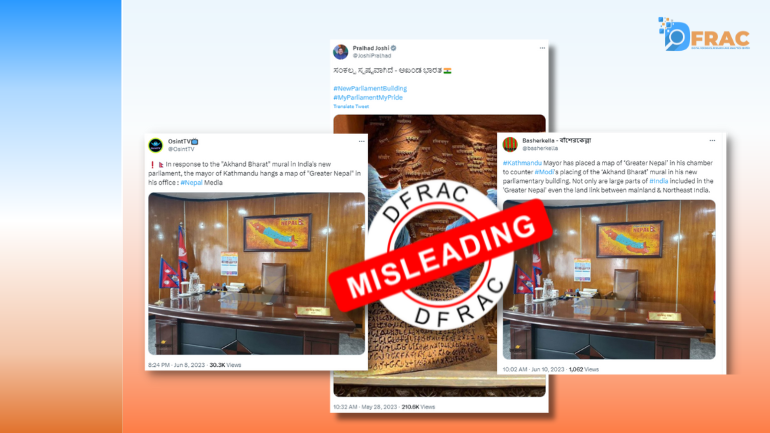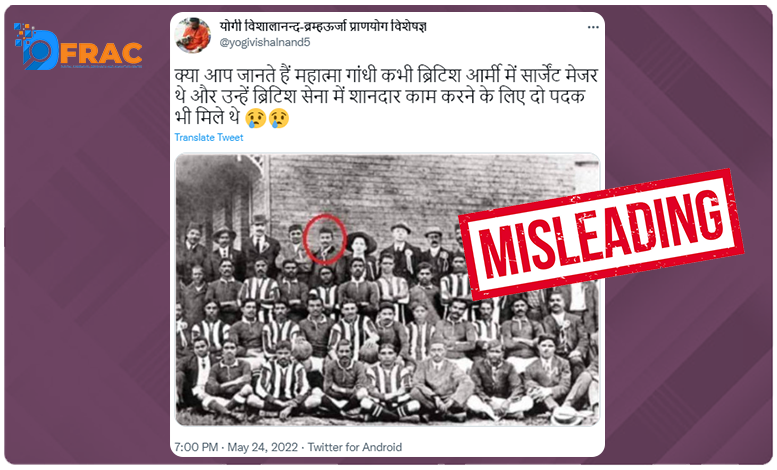A major controversy has taken place out in Nepal over the mural of the Indian subcontinental landmass in the newly inaugurated Parliament building. Social media users has interpreted it as the map of Akhand Bharat (I.e. Undivided India), this whole scenario has drawn angry responses from Nepali political leaders across party lines.
On 28th May, when Prime Minister Narendra Modi inaugurated the new Parliament building and dedicated it to the nation this whole scenario of mural came into notice. Parliamentary Affairs Minister Pralhad Joshi was among the first to describe the mural as “Akhand Bharat”.

On 9 June 23, a government Verified handle of “Communist China” was found promoting Balendra Shah’s (Kathmandu Metropolitan city Mayor) Greater Nepal movement by sharing this post on a Chinese social media platform ‘Weibo’ claiming that the people of China are supporting the sovereignty of Nepal.

Many users from Pakistan, Bangladesh and Nepal are amplifying this issue on their social media accounts.



Not only this, but Ashok Swain too tweeted in the context that is supporting the enmity between two countries.
He writes, “Kathmandu Mayor has placed a map of ‘Greater Nepal’ in his chamber to counter Modi’s placing of the ‘Akhand Bharat’ mural in his new parliamentary building in New Delhi. Not only are large parts of India included in the ‘Greater Nepal’ even the land link between mainland and Northeast India.”

With this, #Akhand_Nepal was trending on 8th June, which was its initial stage and with time the number of posts increased.

We found out that nearly 230 users tweeted on this hashtag influencing more than 550k accounts on twitter.

Fact Check:
To check the authenticity of the viral claim, DFRAC team did a keyword search and found many reports on this entire issue.
According to the report of Times Now, Adwaita Gadanayaka who is director general for the National Gallery of Modern Art explained that the mural depict the influence of India during the ancient ages.

In an interview given to Times Now, EAM S. Jaishankar states, that Pakistan do not have capacity to understand, he further added that rest of the countries who are friends with India have understood the matter. The mural is not of Akhand Bharat but a depiction of spread of Ashokan Empire.
Scholar Dilip Mandal on twitter too suggested it as a ‘Mauryan Empire’.
He tweets, “There’s nothing controversial in this image from the new parliament building. It doesn’t represent Akhand Bharat or similar concepts, as Tamil Nadu is notably absent. You can notice the colour difference. It actually depicts the great Buddhist Magadh/Mauryan Empire; something the curator should have clearly indicated. Murals of King Ashoka and Ashokan edicts are also featured.”

Conclusion:
By our investigation and analysis, it is clear that the mural has nothing to do with the controversy as claimed by social media users. Moreover the mural depicts the ancient maurya times. Hence, it poured a cold water on the intentions of Pakistani and Chinese users amplifying it on social media.





